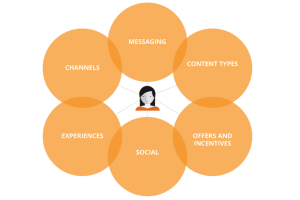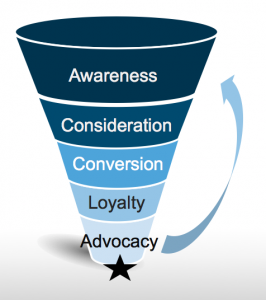
The product development journey is a challenging path with lots of pitfalls. Both product startups and medium-sized businesses face them in spite of the years of experience in the industry. Life-long learning philosophy finds its place here. The err is human, all of us make mistakes, but we also can learn from the mistakes of others.
We suggest you dive into insights and tactics based on the experience of people who have made a lot of mistakes before creating products that met sky-rocket success. In this article, you will find a mix of practices that will help you find perfect product-market-fit and quotes of the thought leaders and founders of global product development companies.
What is a Product Strategy and Why Your Brand Needs It
At the heart of it, a product strategy is a road-map of a product that outlines the end-to-end vision of the product, defines the big picture context in terms of what the product will become, and how it can find its perfect market-fit.
The foundation of any product strategy is a desire to make customers recognize the product’s value, tell others about their great experience with the product, and help the company replicate a great experience for new users. The market fit happens when the company’s value proposition, customers, and distribution channels align. The balance of all three is needed to provide long-term product success.
According to Forbes Magazine, a product-market fit occurs when a brand can satisfy a hair-on-fire problem that a significant number of people have. It is also defined as a scenario in which a product can meet the customer’s needs in a way that similar brands cannot do.
“To be successful, the product should be “flexible” and timely injected by a dose of required changes. It is the only way to find a perfect market-fit and offer target users exactly what they need. The product is made not only by people but also by a dynamic improvement process, it is like a living organism.” – Dima Venglinski, CEO and Founder of Fireart Studio, a product design and development company.
Product-Market Fit Goals for Startups
“At the heart of every product person, there’s a desire to make someone’s life easier or simpler. If we listen to the customer and give them what they need, they’ll reciprocate with love and loyalty to your brand.” – Francis Brown, Product Development Manager at Alaska Airlines
Research Your Target Audience

The first step to product success is to investigate who are users that represent your target audience. These are people who will benefit from your product the most. Likely, there are several groups of prospective customers. Use market segments to identify who is your ideal customer.
Under the concept of an “ideal customer,” we understand a particular archetype with a set of peculiarities that are applicable to all people whose needs your product can satisfy. The customer image (archetype) will help your team understand who it is creating a product toward. This research usually includes three stages:
- Analyzing your product/service;
- Investigating your competitors;
- Selecting segmentation criteria;
- Conducting research itself.
At the last stage, companies create an ultimate customer image, buyer persona, and determine what “part” of that persona they should target in order to find product-market fit. This research is based on the questions prepared in advance. After it is done, the findings must be shared with all the executives for effective collaboration on the project.
Explore How to Make Your Product a Pain-Killer. Talk to Your Audience to Find Its Pain-Points
“Your most unhappy customers are your greatest source of learning.” – Bill Gates, Co-Founder of Microsoft Corporation
The second most important feature of a successful product is that it solves the right problems. Not imaginative ones or problem symptoms but the core problems. You should keep in mind, you are not your end-user. You may think differently. Try to identify the real-life problems experienced by your target audience, conducting questionnaires for your customers or by gathering user feedback from your sales and customer support teams.
Talk to your marketing and support teams to get valuable information about the user’s complaints. It will help you identify the customer’s pain points and build a product that tackles these challenges.
Don’t Diffuse Attention – Focus on a Single Vertical

The common challenge faced by all startups is a small budget. But remember that the jungle can be grown from seed. Start with focusing on narrow product specifics that satisfy the small group of customers, but it does it brilliantly. It is better not to try to cover the huge audience since the attempts to sell a product to a bigger group of people can end in the real financial disaster for a startup.
Concentrate your attention and efforts on a narrow focus but dive deep in this area. At the beginning of the journey, your product can have only a few features but they should completely eliminate the user’s problems and do it like nobody else on the market. Present your uniqueness to a smaller audience. When your product will win their hearts, and you will see sales, start thinking of what to do to make your product satisfy the needs of a bigger number of people.
Try to find the gap in the market and make it yours. Offer your target users something unique, no matter if it covers only a small audience. Your first task is just to make your product perfectly fit their needs.
Identify Your Value Proposition
“Creativity is to discover a question that has never been asked. If one brings up an idiosyncratic question, the answer he gives will necessarily be unique as well.” -Kenya Hara, Japanese graphic designer, curator and writer

Figure out what your customers need and how you can outperform the alternative products offering the audience solutions for its problems. Determine which customer needs your product can meet the best, make them the essential elements of a product promotion strategy, and start building your marketing around them.
The diameter of your value proposition will grow over time, but it’s recommended to start with tailoring a product that solves the user’s most significant and specific problems. For example, Spotify has defined its value proposition as the streaming service that provides access over ownership, offering data-driven personalization, and the opportunity for content unbundling.
Measure Your Product Market-Fit
Success is a measurable value. To be aware of what you need to improve to reach even bigger success and in what you are already good, you should define key data points that will help you keep track of your performance. First, start with determining your TAM (total addressing market), or in other words, the total number of people who can benefit from your product.
TAM is calculated by multiplying your average revenue per user (ARPU) by the total potential customers in the market. When your TAM is identified, figure out the percentage of TAM that is your actual customers.
Keep Abreast With The Customer’s Needs

If your product seems to achieve its perfect market-fit, it doesn’t mean that its time to relax. To stay competitive and relevant to your target users, you should continuously research the customer’s needs as they are changing all the time. Keep in mind, a product is successful if it is continually developed and timely adjusted to the needed changes.
Conclusion
Stay patient and persistent to your goals. To find a product-market fit is neither easy nor fast, however, it’s worth all the attempts. With market-fit knowledge, your team can build a great product much easier and faster. Your customers and other interested parties will become your marketing effort and help you scale your success. Hopefully, this article will help you get a clearer understanding of the topic and give your product strategy a fresh update.
Business & Finance Articles on Business 2 Community
(68)
Report Post







